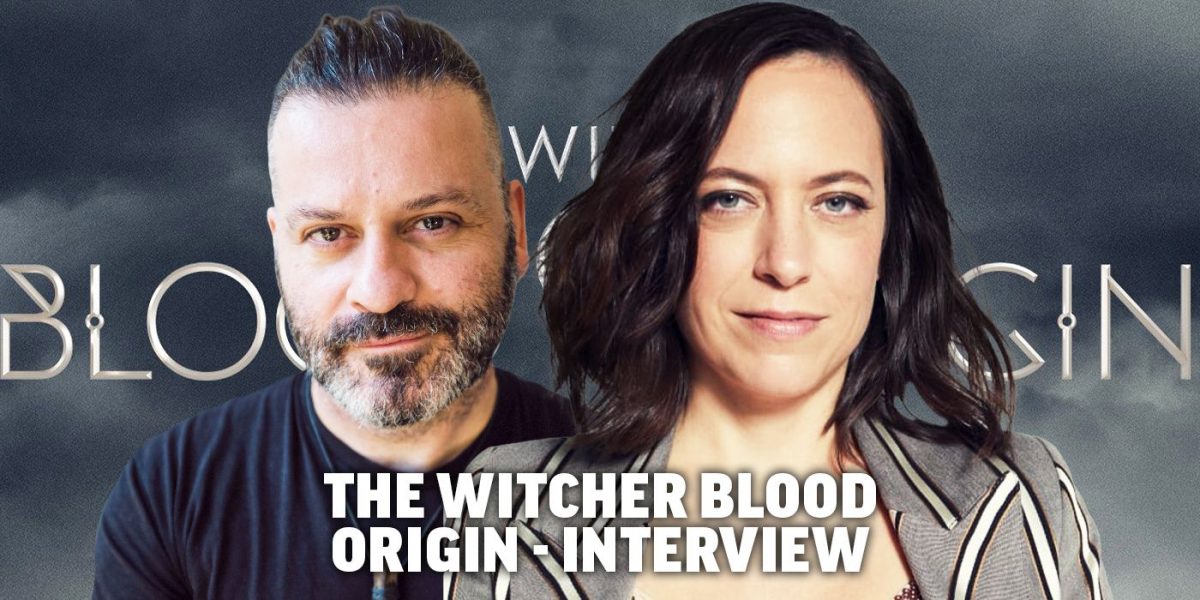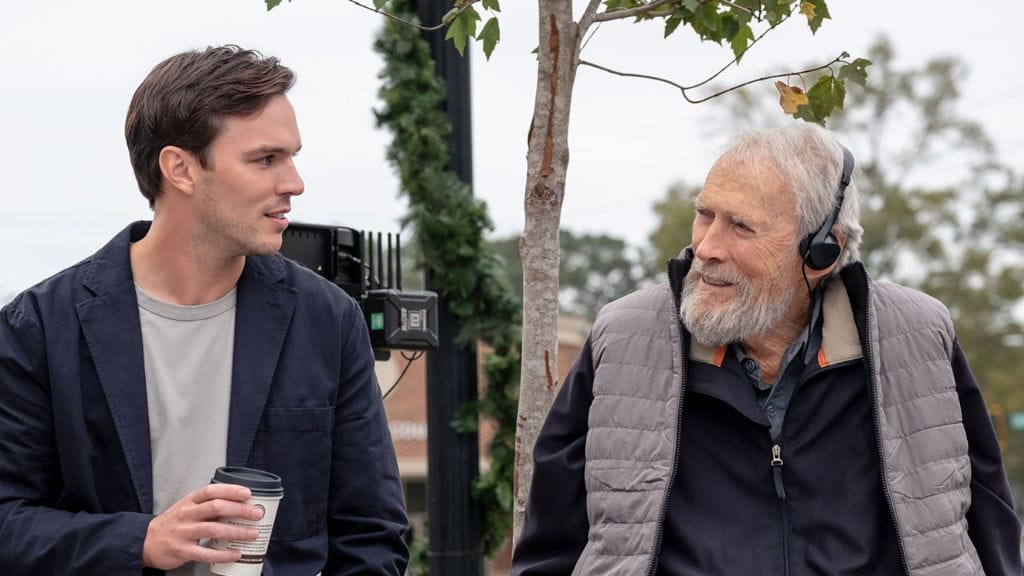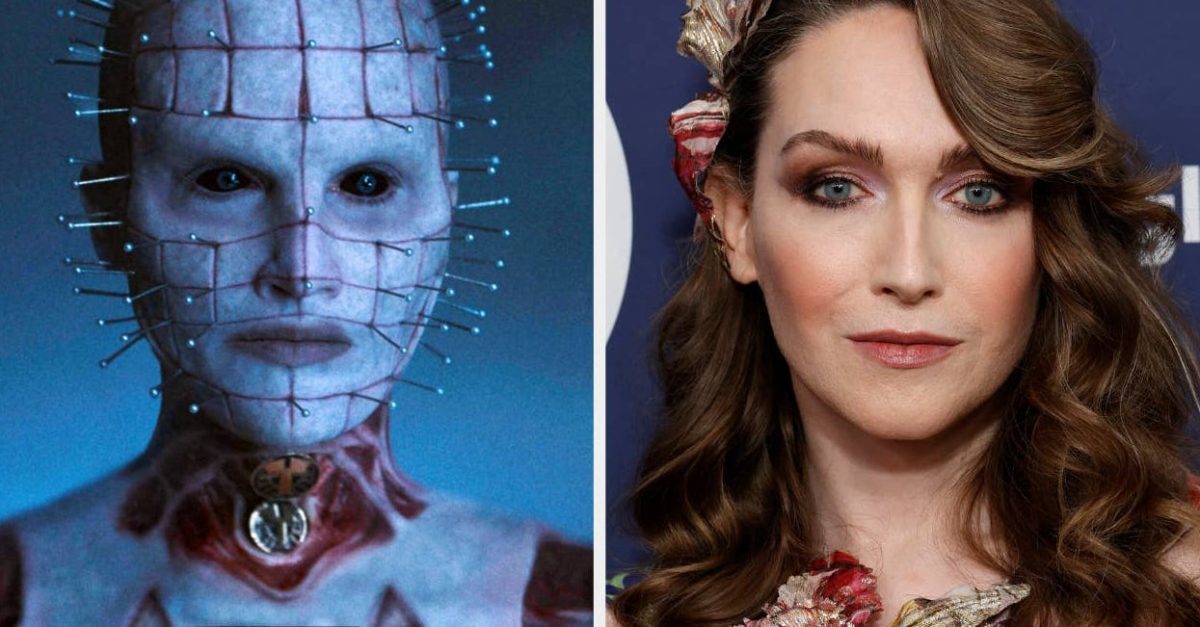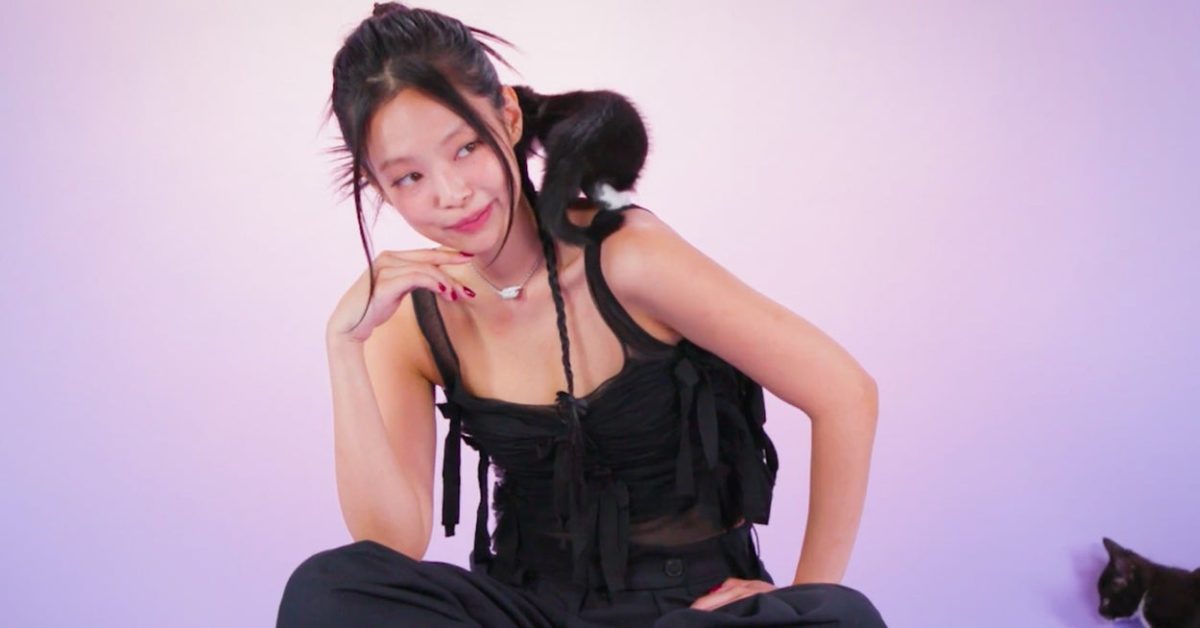
Blood Origin Showrunners on First Witcher, End Credits Scene
Dec 30, 2022
Editor’s Note: This interview contains spoilers for The Witcher: Blood OriginIn the new Netflix series The Witcher: Blood Origin, viewers are transported back 1200 years before Geralt (Henry Cavill), Yennefer (Anya Chalotra), and Ciri (Freya Allan) ever crossed paths. The series follows a flourishing Elven society, and sees the creation of the first proto-Witcher, all events leading up to the “Conjunction of the Spheres.”
The series comes from creators Lauren Schmidt Hissrich and Declan de Barra, who also collaborated on the original Witcher series, where Schmidt Hissrich serves as showrunner and de Barra as a writer. The series sees Joey Batey reprise his role as Jaskier from the original, while adding an impressive new cast with Lenny Henry, Sophia Brown, Laurence O’Fuarain, Michelle Yeoh, and Minnie Driver.
Before the series started streaming on Netflix, Collider’s Steve Weintraub spoke with Hissrich and de Barra about connecting The Witcher to Blood Origin, coming up with the identity of the first Witcher, designing the Conjunction of the Spheres, that after credits scene, and Hissrich’s planned ending for the main series. If you’re curious how key decisions were made in Blood Origin, you’re in the right place.
COLLIDER: I want to jump in right at the beginning of episode one and ask, how did you decide that it was going to be Minnie Driver coming in and narrating everything and how, ultimately, the beginning of Blood Origin was going to happen?
DECLAN DE BARRA: It was an organic process. We had the basic pilot and then we were constantly shaping it as we were going on. “What can we do to make this better? What can we use to make this stronger?” And you’re constantly rewriting. Then Lauren had the great suggestion of, what if we used Jaskier’s device to tie it back? And it just seems so clear and obvious now, but at the time in the fog of war, you go, oh wow. Yeah, of course. And then as we were framing that, writing a story, how would he come in and where would he sit in this world?
We had actually shot a different version of it and then we came up with this brilliant idea. We re-shot it because we wanted to bring in this character that Minnie plays of a Seanchaí, a shape shifting storyteller that sort of drift between worlds and times. Collecting stories like grain, putting them in a seed bank for when the Worlds need them to replant them and let these stories flourish again for when people need them to rally around. It was just such a lovely, evocative image that we had to go with that. We actually made that part of a little re-shoot we did. And compared to the original version we had, which just Joey by himself and then it just began to sing like this idea, but it came from Lauren’s noggin. So if you anything else there, Lauren, to add?
LAUREN SCHMIDT HISSRICH: No, you covered my noggin quite well. No, I mean, Declan’s right, anytime that you get the opportunity to watch cuts coming in and go oh my God, there’s an opportunity for us to do this in a slightly different way, to connect things slightly better and Declan can talk about getting Minnie Driver on, because obviously, that’s dream casting for us. If you think about who is going to sound like this mysterious magical elfin, whose voice is going to pop up every now and then and just sort of remind us what the macro arc is, that’s an amazing get for us.
DE BARRA: Yeah, it just sort of fitted so well in. When I was thinking about this idea with Seanchaí story collection, it was that moment where all the sort of story about music and story and words being more powerful than any army, sort of all less than you then to have it sort of personified in this sort of creature that’s raison d’être is to collect stories because they are so powerful. It was great. And the name Seanchaí actually comes from… It was a position in Ireland where you were a storyteller, and you went between the halls of kings, and you went to chieftains and people, and you were the most powerful people in the land and kings were fucking terrified of them. And queens. Because one bad story would destroy you as a king. And they were far more worried about that than any army. And then bringing that back to life in this world, it just all clicked. It was one of those lovely synchronous moments of story.
Image via Netflix
Lauren, with the success of The Witcher, I want to know how far have you actually thought about the long term story of The Witcher? Have you thought about if we get to go to seven seasons, I have this or is it sort of season by season?
SCHMIDT HISSRICH: I know exactly what you mean, and it has been my goal with my executives at Netflix to always have an end point in mind because to me, when you start just writing stories without knowing where they’re going, you can get lost. And what I think is so interesting about what we have figured out, to answer your question in two ways, yes, I absolutely know where the series is going to end. I know what season it’s going to end. I know how it’s going to end, which is very, very exciting. The interesting thing though, especially when you get toward the end of the books, is you go into Lady of the Lake, which is the last book that we will be covering in the main series. And at that point things kind of explode in the Sapkowski worlds and you end with Ciri suddenly talking to Galahad and you’re like, wait, now we’re with Arthurian Knights.
To me Lady of the Lake is the perfect example of how these stories can continue flourishing and developing even beyond the main saga, which is where obviously Blood Origin comes in. But I was asked a lot, are there going to be other sequels and prequels and spinoffs? I think, certainly Sapkowski’s books are kind of limitless in a lot of ways. So I think what is really interesting is to look at the lifespan of the mothership and then also the lifespan of the different types of stories that we can tell. So I could keep going for a while. I always joke that I could do this show long enough to… I’m starting to turn gray now, that eventually I’m going to end up playing Geralt and that’s when we know that the series has to end. So yes, to answer your question, I definitely have an end point in mind. That was a very long answer to get there.
DE BARRA: I think you did as well from the beginning, Lauren, I remember you in the room when I first started writing with you in season one and watching you, you constantly were churning books over and you definitely had end goals. It was amazing to watch was, oh, she’s not just winging this with season one, she’s got seasons planned. It was cool to watch.
SCHMIDT HISSRICH: Thank you for saying that. And I think, just one tiny, tiny little thing, which is that, I think a lot of people believe that you sort of go into a season of television saying it’s going to be this book, but clearly that’s something that we have not been able to do because there are some books that are like Blood of Elves, which season two sort of loosely was based around. It didn’t have enough action to keep us going, so we ended up having to bring parts of Baptism of Fire into it. Parts of the earlier short stories, I mean Declan’s episode, “A Grain of Truth” was what kicked off season two. So immediately we know that we have to be flexible with how the books are split up versus how the seasons are split up and Declan’s right. I’ve been sort of turning that in my head since the very beginning.
One of the things that the Blood Origin series does is really gets into the power of the Monoliths. And can you both talk about how you decided what the powers would be because you introduce things in Blood Origin that could play in the future?
DE BARRA: It was kind of nice to be able to come up with these sort of explanation, the origins of them and how they fed into the Witcher world. What I love about them is that the dwarven and they’re who are… Sort of get short shrift, these are the guys who are always the butt of the sort of fantasy joke, but they have this wonderful system where… To me it was like the statues on Easter Island where they were… We don’t know what they’re for and as many theories and…
I just love the idea that it became very clear that they were sacred and used as fertility for the land, and they were very important to the wars, of course, then the orcs took over, but this one very smart… I don’t know what you’d call him, savant sage, who had these wild ideas that nobody believed in, thought he could use these and co-op them, co-opt another culture’s technology and use it to open portals out of worlds. The story kind of wrote itself once it sort of figured out that they were originally dwarven and they were originally used for fertility on the land almost like on Easter Island.
Image via Netflix
We’ll talk a little bit about the time travel because that’s a whole thing that you guys open up with this.
SCHMIDT HISSRICH: Hugely. I mean we always knew that obviously time travel was going to be part of the main series because Avallac’h is part of the main series and of course that’s one of Ciri’s main powers, is traveling through time and space. And this does connect to the Monoliths. Its we know that Tor Lara is the basis of a lot of power, that there is a portal that is held in Tor Lara and we as the writer’s room, even probably Declan, even before Blood Origin was even a thought in our minds, we started talking about, what is within Tor Lara that makes it special? What could be in there? And since we’d already planted the idea of these Monoliths in our story, it was like, well, what if that’s a Monolith? What if that is sort of the power? That’s the thing that is special in this place, which is why we then back filled it into Caingorn where we see Ciri travel through time and space for the very first time in our series.
And that was sort of what we front loaded, or I guess had back loaded in a way, that allowed Declan to go and of front load an entire story about their origins. So what I love, I mean, we talked about this a little bit obviously already, but what I love is being able to have these sort of two separate shows that can weave back and forth into one another. I mean we didn’t start out necessarily with a perfect blueplan- blueprint because Declan and the writers would start writing, they would come up with an idea, Declan would text me furiously, “Will this work?” And I’m like, “Yes, but now we need to twist it this way. Can you plant this idea?” And that’s sort of where the idea of Avallac’h showing up in Blood Origin came from.
You guys have an after the credit scene in episode four, how did you come up with that after the credit scene? Was it almost something else?
DE BARRA: No, it was… Once we discussed Avallac’h going forward, that was the obvious because in the books he’s so concerned and obsessed with Ciri, dark Avallac’h. She’ll call him dark Avallac’h, once he no longer innocent and wide eyed. So it seemed the obvious place for that to go as a connection for the fans. So it sets up where it goes in the books and in the TV show.
Well I’m curious with that setup, does that set up play out in Season 3 or this something for further down the line?
SCHMIDT HISSRICH: That is something much further down the line for us. Avallac’h shows up quite a bit later in the books, comes into things during Tower of Swallows. So no, we will not reach that point in Season 3 yet.
Image via Netflix
Can you both talk about how early on did you know the identity of the prototype Witcher? And was that figured out in the writer’s room of Blood Origin? Had that been something done previously?
DE BARRA: It shifted around a lot. Once it was going to be Éile and then the idea of sacrifice- Witchers are always sacrificing themselves or someone is sacrificing an innocent essentially to become a Witcher, is always this element of sacrifice and sacrifice. The idea of sacrifice between two lovers where someone co-ops or steals the other person’s sacrifice because they love them, without admitting that they loved them. That was something really strong. When we hit on that, that’s when we realized there’ll be a flip.
You’re kind of playing it so the audience believes it’s going to be Éile and Éile believes it’s going to be Éile, everybody believes it’s going to be Éile, but then he can’t let her die because he sees that she’s got this power in her music that’s going to have just a massive effect. And he doesn’t see anything other than himself, other than a killer. And for him it’s better that he sacrifices himself even though it’s going to piss her off because she will live on. And whether he admits it at that point or not, he’s sort of fallen for her. It kind of wrote itself once that idea of sacrifice came up.
I’m not sure if you want to add anything.
SCHMIDT HISSRICH: What I will say is that I think Declan’s absolutely right. Going back to even an earlier step than that, one of the things that when we first started talking about the Conjunction Spheres and Declan pitched me his idea straight off of his napkin, which truly ended up being the show. One of the things that we talked about next is, it’s going to be called The Witcher: Blood Origin. So how do we start promising the audience the things that we know that they love about The Witcher? Because obviously the origin story was going to fit into our world no matter what. But any sort of Netflix data will tell you people like monsters and people like Witchers. And so we knew with this 1200 year time gap that we were never going to be able to tie the worlds as closely together as we would like. And it was Declan who came up with this idea of the proto-Witcher.
And do you remember Dec, we even spent a while trying to figure out what to call it. ‘Cause we can’t call it Witcher because that’s actually something that we know from Sapkowski’s lore, happens much, much later, 900 something years later. So we were like, okay, it’s not exactly the first Witcher, what would it be? And that’s also when Declan came up with the idea of this sort of early Trial of the Grasses. So even the concept of a Witcher came about when we started thinking about how to connect these worlds more closely. My role in it kind of is just to ask questions, to say how do we connect this to Witchers. And then Declan runs off, comes up with a fully formed idea and comes back to me. And I mean, it’s part of the amazing partnership.
DE BARRA: Yeah. And the idea that the legacy of Fjall sacrificing himself and becoming this proto-Witcher, could become one of the last ingredients that gets resurrected later on. Because part of the story that we tell in this is that all this wonderful world and this technology and culture is, it’s lost. It’s like Rome after the fall of Roman Empire. We’re going into the dark ages and all this technology got lost. And the idea that this crucial element to what will become important in trial of the Grasses for Witchers later, 500 years after Conjunction, is lost. And it’s tied back to this story we have here is like what is that fundamental element that was used?
Image via Netflix
I definitely want to ask you about the skull that is found towards the end of episode four. What would you like to say about that skull?
DE BARRA: It was a way of showing the genesis moment and giving a huge nod to fans as to the… It’s the beginning of the Eredin we know and love from the books and the games and the TV show with that to come. That is the dark wraith of Mörhogg writing eventually to become king of the Wild Hunt after he poisons the king. The dark Eredin, his genesis moment, the aha moment, you see him pick up that skull, which is so visually symbolic of the Wild Hunt and what they become. Of course, there’s many more stages to Eredin becoming integrated in the Wild Hunt. But it was just that visual signifier and a nod to the fans and there you go. This is the beginning folks, you see him here and this is him as innocent as he can be. And now he’s in the world’s turn because he’s lost everything. And what is the beginning of his motivations.
Who got to keep the skull?
DE BARRA: I don’t know. I requested it, but I think it disappeared. I don’t know. My assistant wanted it as well. Maybe she’s stole it… We’re not sure.
I think Lauren has it at her house, but she’s not going to say anything.
SCHMIDT HISSRICH: It’s just off camera. It’s just like over there. You just can’t see it.
DE BARRA: Exactly.
Talk a little bit about the design of the Conjunction of the Spheres and how you wanted that to look and be depicted on the show?
DE BARRA: Yeah, we went to so many rounds of this, so many rounds of it. And I think what we ended up landing on with Andrew Laws, our great production designer and our VFX team was based around… There was a line I wrote and it just sort of became a signifier of this is where we should go because it’s not worlds banging into each other. They’re almost like… Because all these worlds exist in different times at the same time and which reality is real. So it wasn’t physically obvious going into each other. It was that our Spheres of dimensions merging through each other. That idea of the day being consumed by night. And that was our beginning point, and we went from there. And then the idea of the sphere is merging through each other rather than destroying each other. So it’s more of a… Let me see, how would you describe it? Dark elemental physics of these different worlds merging rather than planets hitting each other, if you know what I mean.
Image via Netflix
One of the things that I know about from friends who are directors is that the entire VFX industry is a mess. Just everyone is behind on everything. And I’m curious how that has affected Blood Origin and how that’s affecting The Witcher in general?
DE BARRA: We’re in a really unique time in the world. COVID did a number on everyone. There’s so many shows up in the air, everybody’s competing for everything. Locations, wood, electricians, everything like that. Plus you’re doing it in a plague. Plus everybody’s emotionally exhausted. So I mean, I just can’t thank everybody enough that who worked on this, everybody was so tired emotionally and physically as well. We were trying to find drivers to pick up tiles for shots that being shot the next day and finding trucks. It was run and gun the whole time and you’re being chased by this plague at the same time. And then the same thing happened in the VFX world. People were tired and there was a lot of shows and a lot of competition. And I just can’t thank our VFX team enough for what they managed to do here. I mean because VFX is now in the middle, so you’re good or bad. And our guys, they just would not let go until we had what we wanted. So I bow down before them and their greatness.
SCHMIDT HISSRICH: I mean we’re having much the same experience on The Witcher as everybody is. And I don’t know if the VFX world is exactly a mess. It’s just overrun. It’s too busy.
DE BARRA: Yeah.
SCHMIDT HISSRICH: Like Declan’s saying. To try to find vendors to do everything and we are pushing things within the last moment. And I think it’s going to impact the industry as a whole because basically what’s going to happen is launch dates are going to end up being pushed back. We’re not going to meet the deadlines. I mean, I can only imagine if you’re a network television show trying to use any kind of VFX through your 22 or 24 episodes. So yeah, things are taking longer. The good news is, what I will say following up on Declan is, the quality of the work has not been impacted for us. It just is taking a lot longer to get there. But once you set a certain bar and certain expectations, it’s hard to accept anything under that.
DE BARRA: Yeah, the model we lived by with the production of this thing was in the middle lies death. So you just got to fucking go for it and you got to land it. ‘Cause really if you try and live between both worlds, you satisfy nobody. So either pull back or you go forward. But just don’t try and stay in the middle. Go for it.
I’m curious with The Witcher and the Season 3 release, have you discussed at all doing the first four episodes or the first five episodes and then a split release because A, of the popularity of the show and B, because of VFX?
SCHMIDT HISSRICH: We haven’t discussed that yet, but at this point I think what we see happening across all sort of streamers, I wouldn’t rule it out. I do think that obviously we don’t put anything out that we’re not incredibly proud of. So that dictates our entire launch date. And I think it’ll be interesting. Again, we have a way still a very long time, eight, eight-ish months or so until Witcher Season 3 will come out. So God willing, we get it all out at the same time. But who knows, we’ll see what happens.
DE BARRA: And hats off to a lot of these smaller houses, the effects houses who are stepping up and taking a lot of the work and making their mark. It’s amazing to see.
Image via Netflix
I really like the beginning of episode one and how it starts upside down and then comes in. Can you sort talk about why you wanted to start where the camera is in episode one?
DE BARRA: Yeah, that was one of our little re-shoots that we planned when we’re tying all these episodes together. And yeah, it just happened on the page. I think it was the first thing I wrote. We’re upside down. ‘Cause you want to start this and we’re really take, again in the middle lies death. I wanted to surprise the audience and show that this is a new world. And even though we’re dealing with sort of present day when we meet Jaskier, just we’re going to upend your expectations. It’s maybe a little on the nose, but that’s the way it came out on the page and it was just starting upside down and we had access to a great director and it was really cool.
The end of episode four, Minnie’s character says, “In one of her blood shall sing the last,” is this a prophecy for the immediate future or somewhere down the road?
DE BARRA: It’s suggestive and we can’t really give it away without spoiling other things. But it suggests that it may have something to do with the bloodline of The Witcher, but it also has other consequences for that. But unfortunately that can spoil it. It’s a Season 4 question.
The Witcher: Blood Origin is now streaming on Netflix. For more with Lauren Schmidt Hissrich and Declan de Barra, you can watch a non-spoiler interview below.
Publisher: Source link
15 Side-By-Sides Of Horror Movie Monsters And Villains Vs. The Actors Who Play Them
I can't believe how some of them totally transform.View Entire Post › Disclaimer: This story is auto-aggregated by a computer program and has not been created or edited by filmibee.Publisher: Source link
Oct 22, 2024
Unreleased Clip of Liam Payne Working on One Direction Song Revealed
"I am absolutely devastated about the passing of my amazing friend, Liam," Niall wrote in a lengthy Instagram statement. "It just doesn't feel real. Liam had an energy for life and a passion for work that was infectious. He was…
Oct 22, 2024
Jennie Kitten Interview
Jennie Kitten Interview To celebrate the release of her new single "Mantra," global superstar Jennie sat down with us to answer some questions while playing with adorable and adoptable kittens. How is her dog Kuma? What’s Jennie’s love language? What’s…
Oct 21, 2024
A Guide to JD Vance's Family: His Wife, Kids, Mamaw and More
If you knew anything about JD Vance before Donald Trump picked him to be his running mate in the 2024 presidential election, it's that he was raised by his tough-as-nails Mamaw. Which, as the... Disclaimer: This story is auto-aggregated by…
Oct 21, 2024











